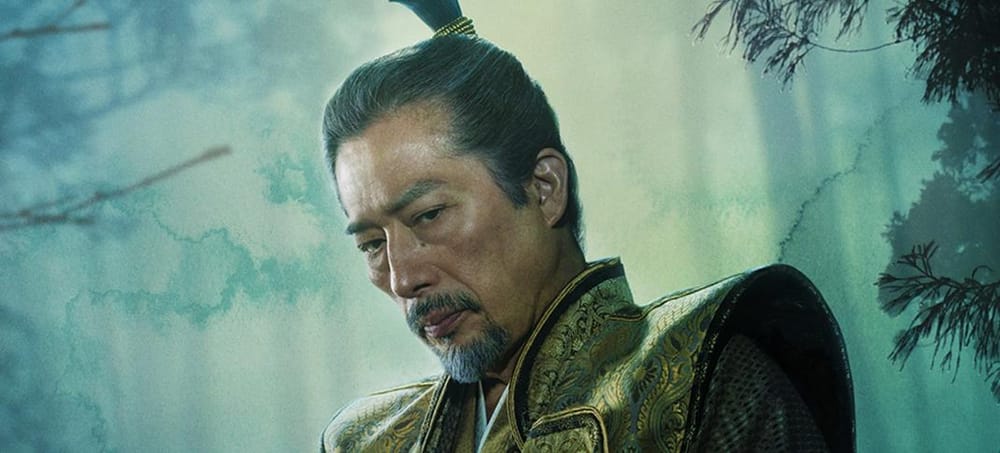The 2024 version of Shogun begins in 1600, as did the 1980 version, both based on the novel by James Clavell. I watched the 1980 version when it came out, hailed by many as a cinematic wonder providing great insight into feudal Japan. It came out three years after Roots and, to many Americans, was their introduction to the history of Japan, though presented from a European viewpoint. 1980 Shogun, starring Richard Chamberlain, also reinforced the white savior trope, far too common in film, television, and history books.
The 2024 version focuses far more on the Japanese perspective. The white characters appearing in the first episodes representing Portugal, Spain, England, and Holland could hardly be deemed heroic. However, the character John Blackthorne, now played by Cosmo Jarvis, is already a pivotal figure and will be a hero, along with several Japanese characters. Others are already praising the new 10-part series as a cultural sea change from the 1980 version. I ask the question now that I naively didn’t ask in 1980. Where are the Black people?
I don’t ask out of a desire to see representation when it wasn’t historically accurate. I inquire because there were Black people in Japan in 1600 and before, though Japan could teach Florida a thing or two about rewriting history. According to multiple sources, one of the early real-life Shoguns, Sakanoue no Tamuramaro (758–811), was Black, though denied by others. There is a consensus he was something other than pure Japanese, and he is often considered descended from the Ainu, the darker-skinned indigenous people of northern Japan who were subjected to forced assimilation and colonization.
Historian Mark Hyman described a statue in honor of Tamuramaro in his book.
"As seen in the temple where he has was honored, Maro’s statue was taller than his fellow contributors," wrote Hyman "His hair was curly and tight; his eyes were large and wide-set and brown. His nostrils were flared, his forehead wider, his jaws thick and slightly protruded.”
The statue of Tamuramaro at Kiyomizudera is normally closed to the public. Since its construction in 778, Kiyomizudera has been plagued by numerous fires and rebuilt several times. The current statue has none of the Negroid features described by Hyman.
Many researchers have documented the suggestion of and existence of Africans in Japan, one dating back 22,000 years, near Osaka, where much of the Shogun series took place.
“The probable number of Negroes who reached the shores of Asia may be estimated somewhat by the wide area over which they were found on that continent," said Lois Maillou Jones. "Historians tell us that at one time Negroes were found in all of the countries of southern Asia bordering the Indian Ocean and along the east coast as far as Japan. There are many interesting stories told by those who reached that distant land, which at that time they called `Cipango. One of the most prominent characters in Japanese history was a Negro warrior called Sakanouye Tamura Maro.”
Whether or not Sakanoue no Tamuramaro was Black won’t be resolved here, but the existence of Black people in Japan in the period Shogun depicts is not in doubt. Black slaves and crew members accompanied the Dutch, Spanish, Portuguese, and French ships. While British ships didn’t typically have black sailors until after 1800. The ship sailed by John Blackthorne was a Duch vessel, which often used Black sailors in 1600. Blackthorne’s character was based on the real-life William Adams, who landed in Japan in 1600 on his ship, de Liefde, sailing under Holland’s flag.
A group of Rotterdam merchants that pre-dated the Dutch East India Company commissioned five ships on the expedition to Japan, of which only one landed with 25 survivors. While the Dutch East India Company would have used Black crew members, I have no evidence that Adams (or Blackthorne) would have had Black crewmen. They would likely have existed among the contingents of Portuguese missionaries appearing thus far in the series.
Historian John G. Russell wrote a paper, “Excluded Presence: Shoguns, Minstrels, Bodyguards, and Japan’s Encounters with the Black Other.” He documented the arrival of Black people in Japan in several capacities and that some Black people even owned Japanese servants and enslaved people.
The primary setting of Shogun was Osaka, which was Japan’s economic hub and cultural center during the period of the series. If there were Black people anywhere in Japan (and there were), they would also be in Osaka. Not necessarily freely living and roaming among the people but certainly as part of the groups of European emissaries. Perhaps the 2024 version of Shogun will break ground in future episodes and include the Black people present at the time, though they didn’t in 1980. There is a range of hues among the Japanese people depicted; maybe one will be revealed to be Black. There are some upcoming naval scenes pitting Japanese ships against Europeans, so there’s hope some Black sailors will reflect historical accuracy.
This post originally appeared on Medium and is edited and republished with author's permission. Read more of William Spivey's work on Medium. And if you dig his words, buy the man a coffee.

Comments
Leave a comment